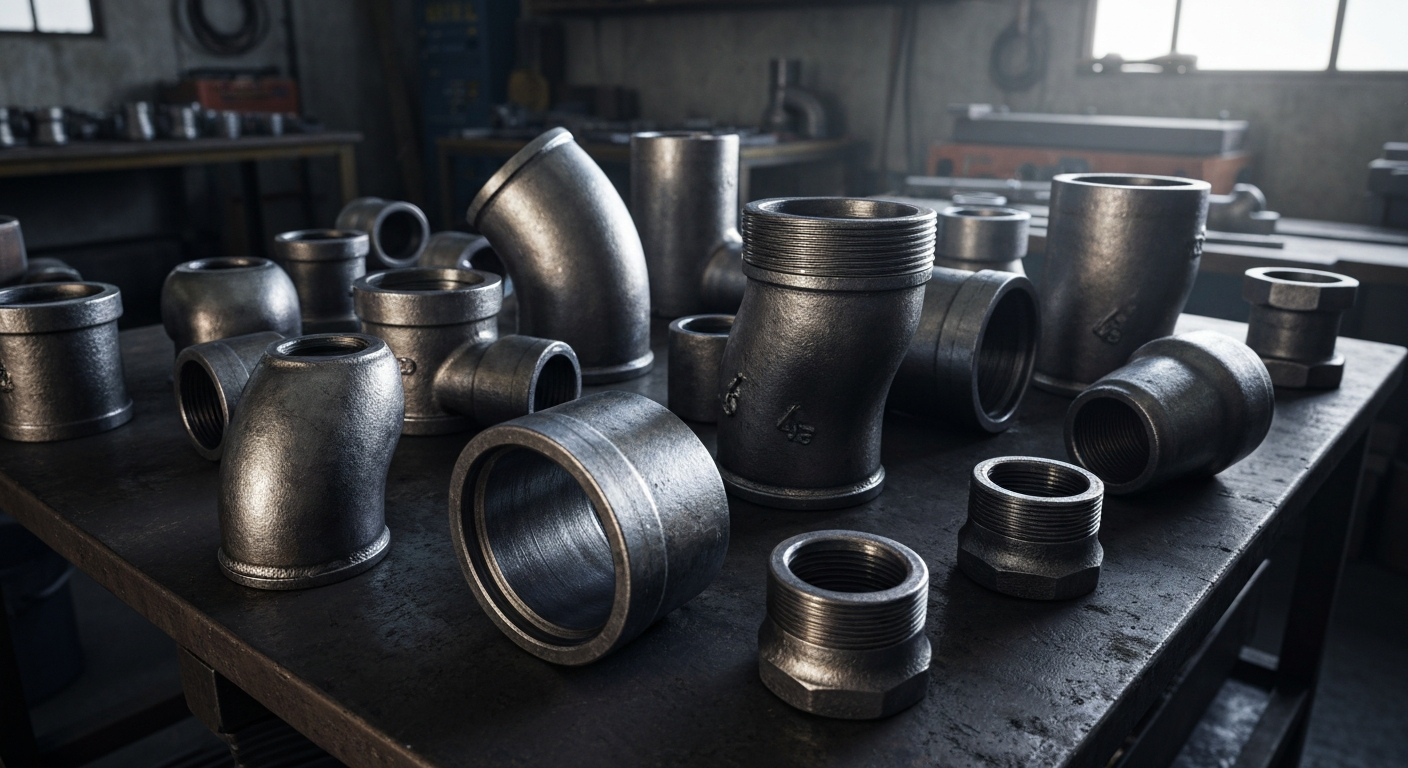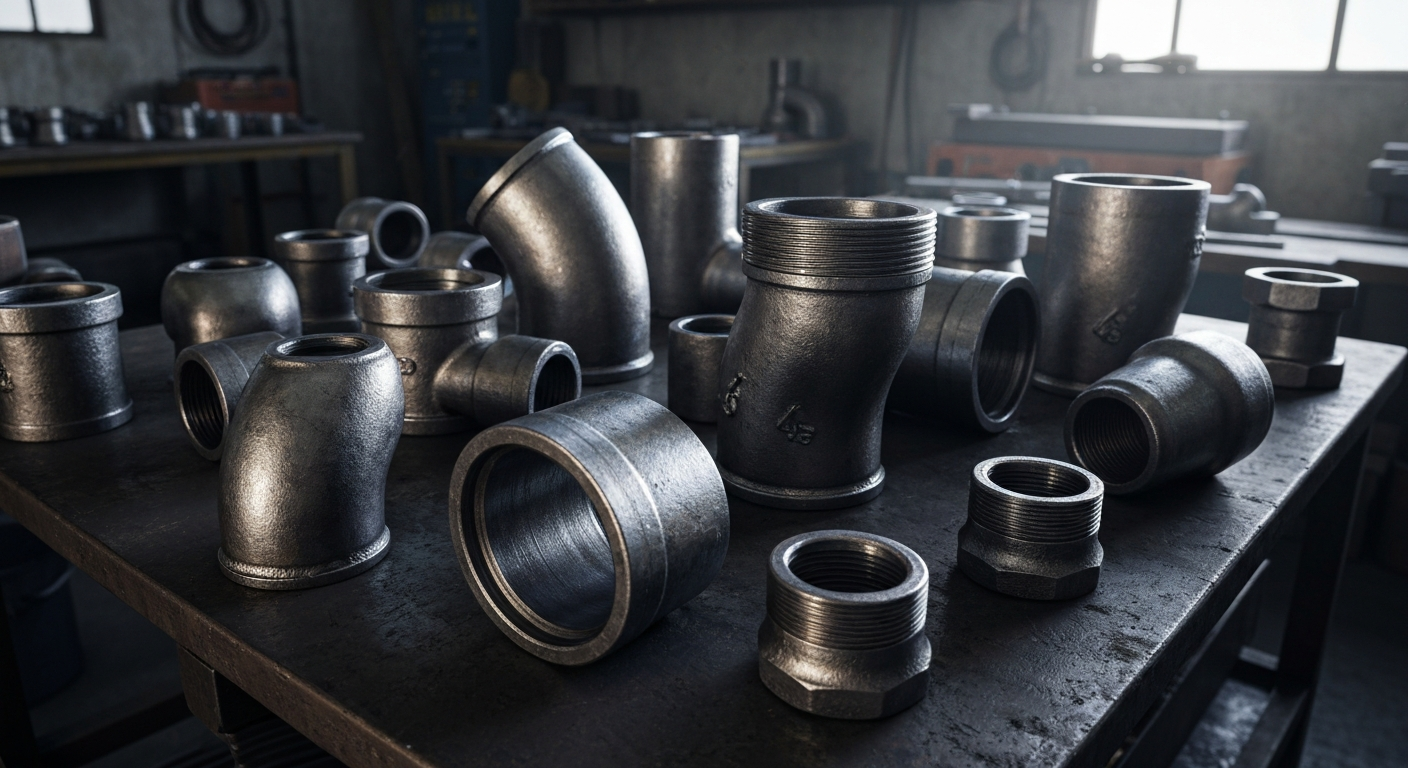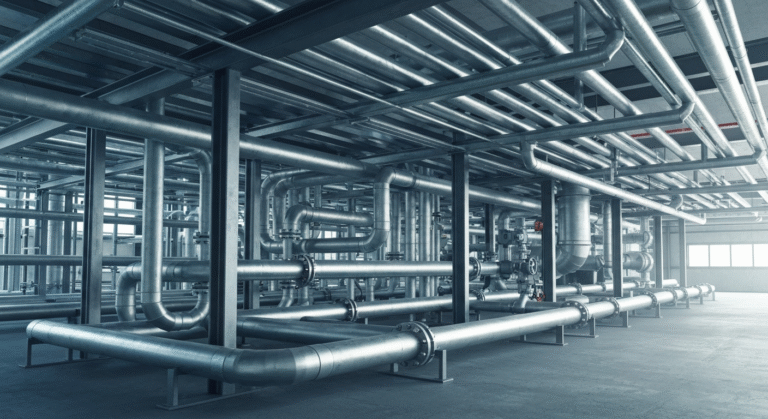-
Zona Industri Yinzhuang, daerah Mengcun, kota Cangzhou, provinsi Hebei, Cina

Perlengkapan Pipa Las Pantat: Panduan Penting untuk Para Profesional

Sorotan Utama
- Butt weld fittings create a permanent, leak-proof connection by welding directly to the pipe. These buttweld fittings create a continuous metal structure that adds significant strength to your piping system. Common shapes include elbows, caps, reducers, and tees, like the useful reducing tee. To correctly install butt weld pipe fittings, ensure that the pipe ends and the fitting surfaces are clean and properly aligned. Use precise welding techniques to join the components, maintaining consistent penetration and bead quality to achieve a strong, reliable weld. It’s essential to follow industry standards for welding to ensure the integrity of the fitting and the overall piping system.
- These chrome fittings create a continuous metal structure that adds significant strength to your piping system.
- Common shapes include elbows, caps, reducers, and tees, like the useful reducing tee.
- Butt weld fittings are available in materials like carbon steel and stainless steel to suit different needs. The smooth inner surface of a butt weld connection reduces pressure loss and turbulence.
If you’re looking to buy high-quality butt weld pipe fittings online, numerous specialized industrial suppliers and reputable e-commerce platforms offer a wide selection of stainless steel and carbon steel butt weld fittings, including tee fittings, for various applications.
- The smooth inner surface of a butt weld connection reduces pressure loss and turbulence.
- Choosing the correct fitting involves matching the pipe’s schedule and nominal size.
Pendahuluan
Welcome to your essential guide on butt weld pipe fittings! If you work with any kind of piping system, you know how crucial strong, reliable connections are. A butt weld fitting is a component that you connect to pipe ends or tubing using a butt welding process. This technique creates a permanently leak-proof and robust joint, making these pipe fittings a fundamental part of building durable and efficient piping networks for a huge range of applications. Let’s explore what makes them so essential.
Butt weld tee fittings are available in a variety of common sizes, typically ranging from 1/2 inch to 48 inches in diameter. These fittings generally come in standard shapes such as equal tee, which distributes flow evenly, and reducing tee, which allows for different pipe diameters to be joined. This wide selection ensures compatibility with numerous piping designs and requirements.
Types and Applications of Butt Weld Pipe Fittings
Butt weld fittings come in several shapes, each designed for a specific function within a piping system. The most common types you’ll encounter are the elbow, tee, reducer, and cap. These components allow you to change the direction of flow, combine or divide flow, change pipe size, or terminate a line.
The versatility of these fittings means they are used across countless industries. From industrial manufacturing to specialized sanitary systems, the right butt weld fitting ensures your welded pipe network operates flawlessly. Whether you need a standard tee or a specific reducing tee, there is a fitting for nearly any design requirement.
Common Butt Weld Fitting Shapes: Elbows, Tees, Reducers, and Caps
Understanding the different shapes of butt weld fittings helps you design a better piping system. Each fitting has a distinct purpose. For instance, an elbow is designed to change the direction of the fluid. They are available in 45-degree and 90-degree angles and can have a long radius (LR) for gradual turns or a short radius (SR) for tighter spaces, with shipping options available.
Tees and reducers manage the flow within the pipes. A tee fitting creates a 90-degree branch from the main line, and it can be an equal tee or a reducing tee if the branch needs a smaller pipe. A reducer connects pipes of different diameters. You can choose a concentric reducer to keep the pipes centered or an eccentric reducer for off-axis connections. Finally, a pipe cap is used to seal the end of a pipe.
Here are the main types and their functions:
- Elbow: Changes the direction of flow.
- Tee: Creates a 90-degree branch connection.
- Reducer: Joins pipes of different sizes.
- Cap: Seals the end of a pipeline.
Usage in Industrial, Sanitary, and Specialized Piping Systems
The application of a butt weld fitting often determines the material you should choose. In general industrial settings, carbon steel fittings are a common and reliable choice for moderate and high-temperature services. They provide the strength and durability needed for many industrial processes.
For applications requiring high levels of cleanliness, such as the food, beverage, and pharmaceutical industries, sanitary butt weld fittings are manufactured in accordance with the standard. These are typically made from stainless steel because of its excellent corrosion resistance and smooth surface. The weld creates a seamless interior that prevents bacteria from collecting, ensuring the product remains uncontaminated.
Specialized piping systems, like those dealing with high-pressure or high-temperature chemicals, may require alloy steel fittings. The specific alloy is chosen based on its ability to withstand extreme conditions. Ultimately, the fluid being transported and the operational environment of your piping system will guide your selection of the perfect butt weld fitting material.
Materials and Standards for Butt Weld Pipe Fittings
Butt weld fittings are manufactured from a variety of materials to meet the demands of different applications. The most common materials you’ll find are carbon steel, stainless steel, and various alloy steels. Each offers unique properties related to temperature resistance, corrosion protection, and overall strength.
To ensure safety and reliability, these fittings are produced according to strict industry standards. Organizations like ASTM, ASME, and ANSI establish specifications for material composition, dimensions, and tolerances. Adhering to these standards guarantees that the fittings you use are high-quality and compatible with your piping system.
Differences Between Carbon Steel, Stainless Steel, and Alloy Butt Weld Fittings
Choosing the right material is critical for the longevity and safety of your piping system. Carbon steel is the workhorse of many industries, known for its strength and suitability for moderate to high temperatures. It’s an economical and reliable choice for systems that don’t carry corrosive fluids.
Stainless steel fittings, on the other hand, are prized for their superior corrosion resistance. This makes them ideal for sanitary applications or for transporting chemicals. While they can be more costly, their durability in harsh environments makes them a worthwhile investment. Alloy steel fittings are used for specialized, high-performance applications that demand resistance to extreme temperatures or pressures beyond the capabilities of carbon or stainless steel.
The primary difference comes down to application. Use carbon steel for general industrial use and stainless steel where you need to prevent rust and contamination.
Bahan | Key Feature | Common Standard |
|---|---|---|
Baja Karbon | Strength for high temperatures | ASTM A234 WPB |
Baja tahan karat | Superior corrosion resistance | ASTM A403 WP304/316 |
Baja Paduan | For extreme temp/pressure | ASTM A234 (WP Grades) |
Key Standards and Specifications in the United States (ASTM, ASME, ANSI)
When you purchase butt weld fittings, you’ll see designations like ASTM, ASME, and ANSI. These standards are your guarantee of quality, safety, and interoperability. They ensure that a fitting from one manufacturer will be compatible with a pipe from another, as long as they follow the same standards.
ASME B16.9, for example, is a critical standard that defines the dimensions and tolerances for butt weld fittings. This ensures that elbows, tees, and reducers will fit correctly during installation. Material specifications fall under ASTM standards, such as ASTM A234 for carbon steel fittings (like Grade WPB) and ASTM A403 for stainless steel. These standards define the chemical composition and mechanical properties.
Finally, stainless steel pipe dimensions, including diameter and wall thickness (schedule), are covered by ANSI standards. Key standards include:
- ASTM A234: Covers wrought carbon and alloy steel fittings.
- ASTM A403: Specifies standards for wrought austenitic stainless steel fittings.
- ASME B16.9: Defines dimensions and tolerances for factory-made fittings.
- ASME B16.25: Covers the preparation of butt welding ends.
Kesimpulan
In conclusion, understanding butt weld pipe fittings is crucial for professionals in various industries. These fittings not only enhance the integrity and durability of piping systems but also ensure compliance with essential standards and specifications. By familiarizing yourself with the types, materials, and applications of butt weld fittings, you can make informed decisions that optimize your projects. Whether you are working on industrial, sanitary, or specialized systems, utilizing the right fittings will contribute significantly to the overall performance and safety of your installations. If you have any questions or need guidance on selecting the appropriate fittings for your needs, feel free to reach out for assistance.
Pertanyaan yang Sering Diajukan
What is the difference between seamless and welded butt weld pipe fittings?
The main difference lies in their manufacturing process. A seamless butt weld fitting is made from a solid piece of pipe material, so it has no welded seam. A welded butt weld fitting is made from a piece of welded pipe. Generally, smaller fittings are seamless, while larger sizes (often above 18 inches) are typically welded.
How do I choose the right size of butt weld pipe fitting for my system?
To choose the right size, you need to match the fitting to your pipe. You must specify the nominal pipe size (NPS) in inches for the diameter and the schedule number for the wall thickness. The schedule (e.g., Sch 40, Sch 80) determines the fitting’s pressure rating and must match your piping system’s requirements.
What are the benefits of using butt weld fittings compared to threaded or socket weld fittings?
Butt weld fittings offer a stronger, permanently leak-proof connection because the weld creates a continuous metal structure. This design provides a smoother inner surface, which reduces pressure drops and minimizes corrosion. Unlike socket weld or threaded fittings, a butt weld system also tends to utilize space more efficiently.


